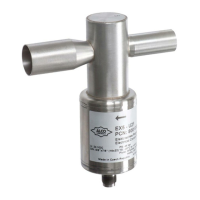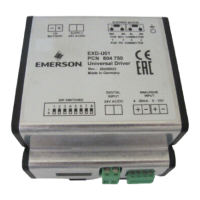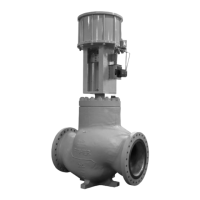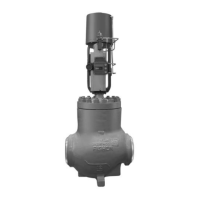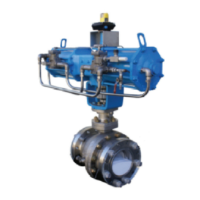112 EZMotion User/Programming Guide
www.controltechniques.com Revision: A8
Figure 120: Bits View (Mask Tab)
In the Bits view - Mask Tab, each bit of the Mask can be set to 0 or 1 individually. ON (or 1) is indicated by a shaded square, and OFF
(or 0) is indicated by an empty square. Bit 31 is the most significant bit in the word, and bit 0 is the least significant bit. If the bit is
shaded, it means that particular bit will be passed through when written.
Each additional group of 32-bits that are added, a new Mask parameter will appear for that group. Mask 0 will control the mask for
Bits 0 through 31. Mask 1 will control the mask for Bits 32 through 63. This sequence repeats for each additional 32 bits that is
added.
To configure the mask in a user program, the parameter named BitRegisiter.#.ValueMask is written to. The mask can be written to
using Hexadecimal based values or decimal based values. To write a hexadecimal value to the parameter, the hex value must be
preceded with the characters "0x". To write a decimal value to the parameter, normal notation is used. For examples of writing the
Mask to a value in a program, see below.
Example:
BitRegister.0.ValueMask = 0xFFFF0000
This example writes a 1 into all bits of the upper sixteen bits, and 0 into each of the lower sixteen bits using hexadecimal value. To
write the same value using decimal notation, the following instruction would be used.
Example:
BitRegister.0.ValueMask = 4294901760
This instruction would also write a 1 into each of the upper sixteen bits, and a 0 into each of the lower sixteen bits.
8.5.9 Packed Bits
Packed Bits are 16-bit words configured by the user to read and write groupings of bit-level parameters (boolean and input/output
events). Packed Bits are broken into Control Word(s) and Status Word(s). These words, once configured, can then be accessed via
communication networks and/or within user programs to handle the bits as desired.
Control Words
A master device such as a PLC or HMI writes to the Control Word(s) as a 16-bit word. The data within that word is then broken into
individual bits and written to the bit-level parameters that the user has mapped (see Figure 121). Note that if one of the bit-level
parameters within the control word is modified from some other means (i.e. a user program or an Assignment), that the value of that
parameter is not written into the Control Word value. For example, if a user initiates a Jog Plus within a user program, Bit0 of the
ControlWord in Figure 121 would not automatically change to 1. Bit0 will only be 1 if the master device sets that bit when writing to

